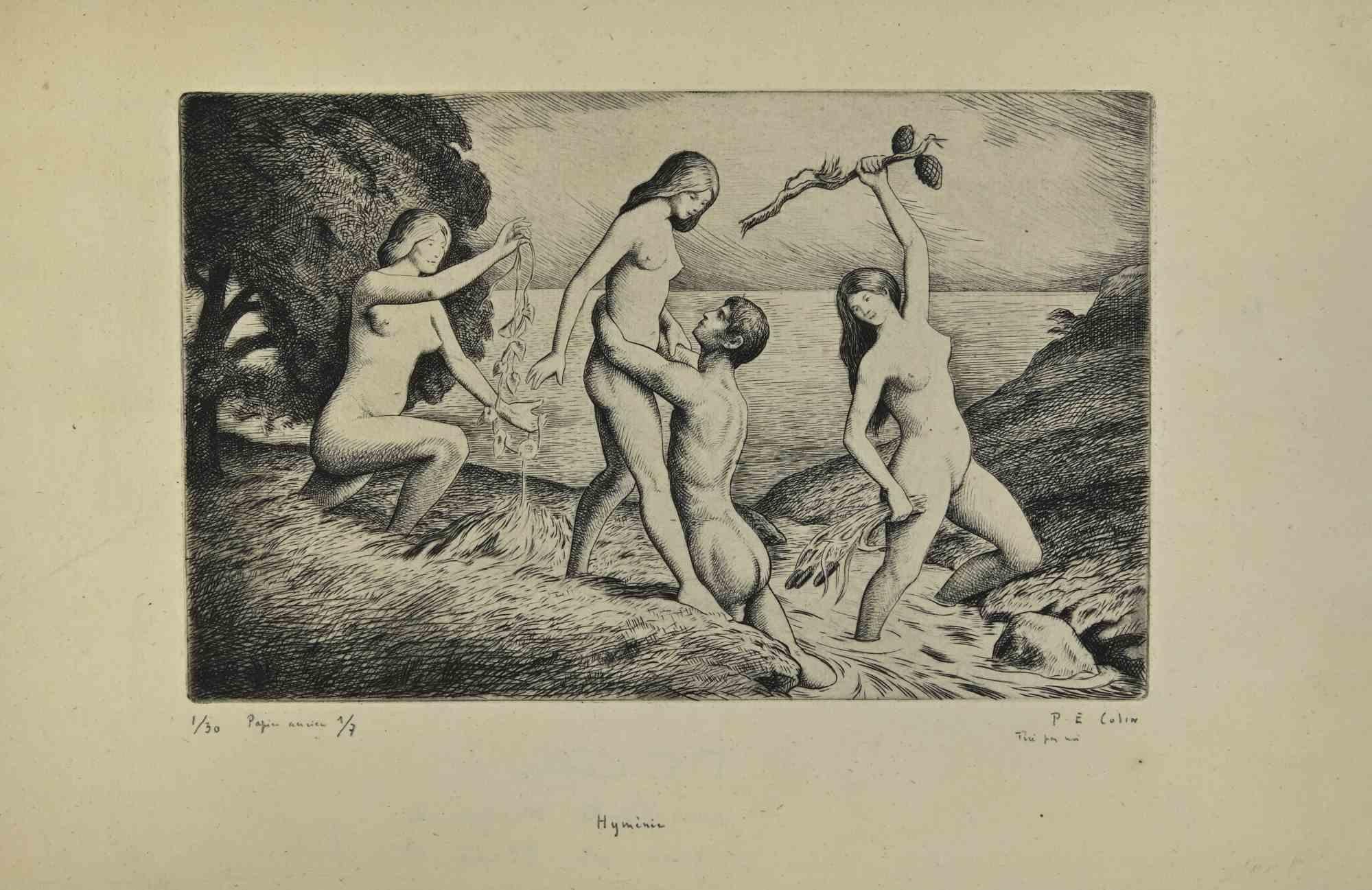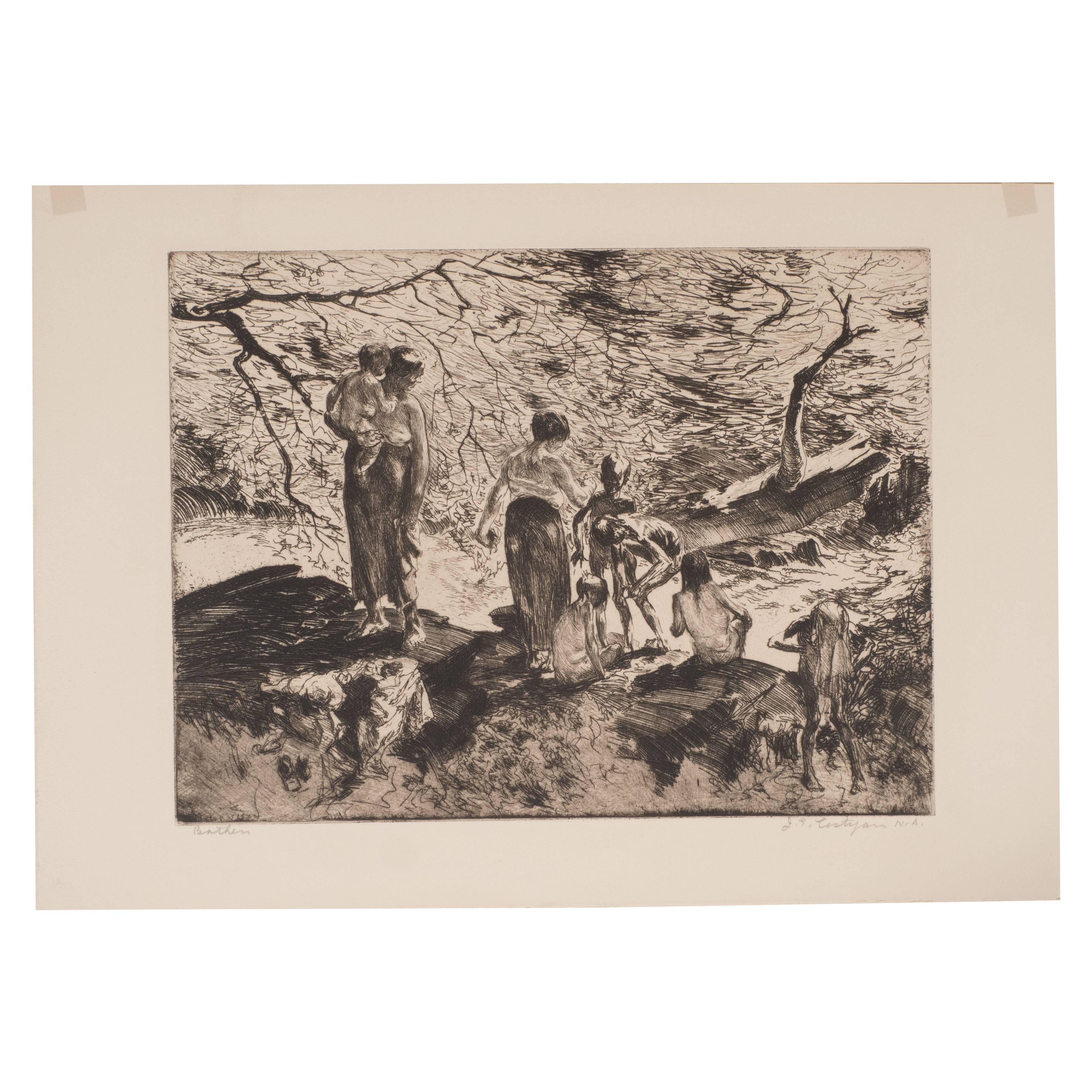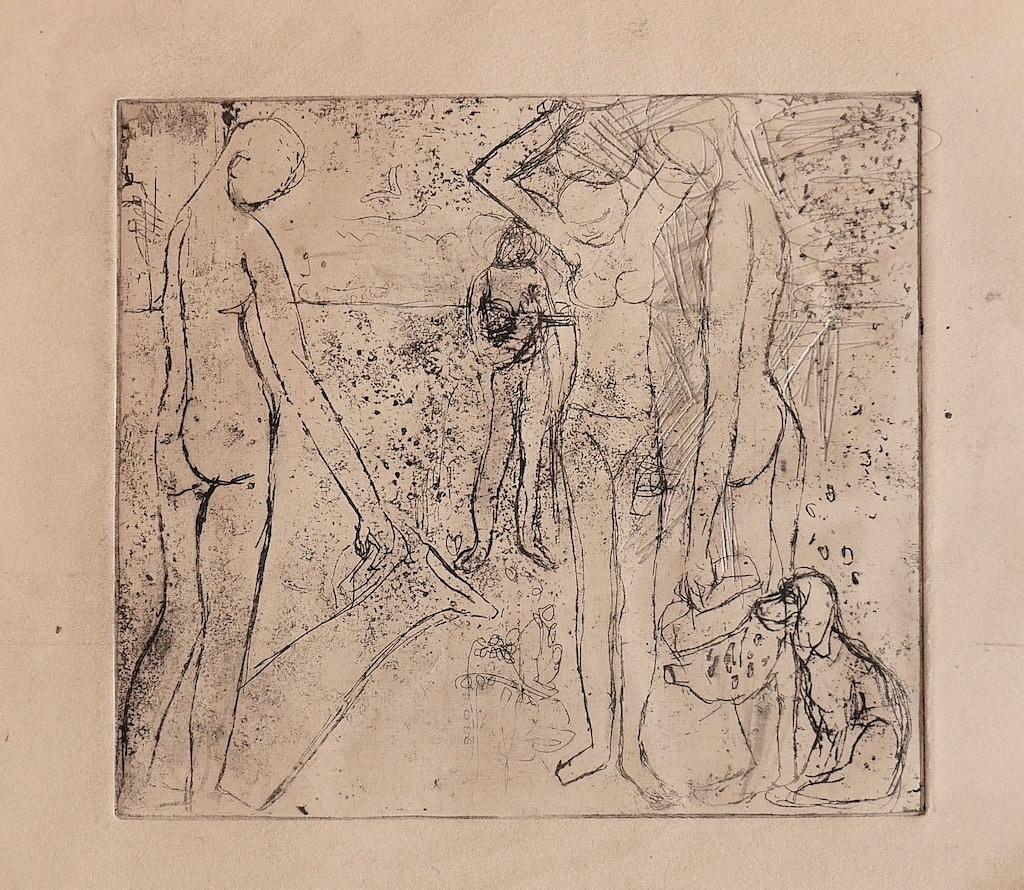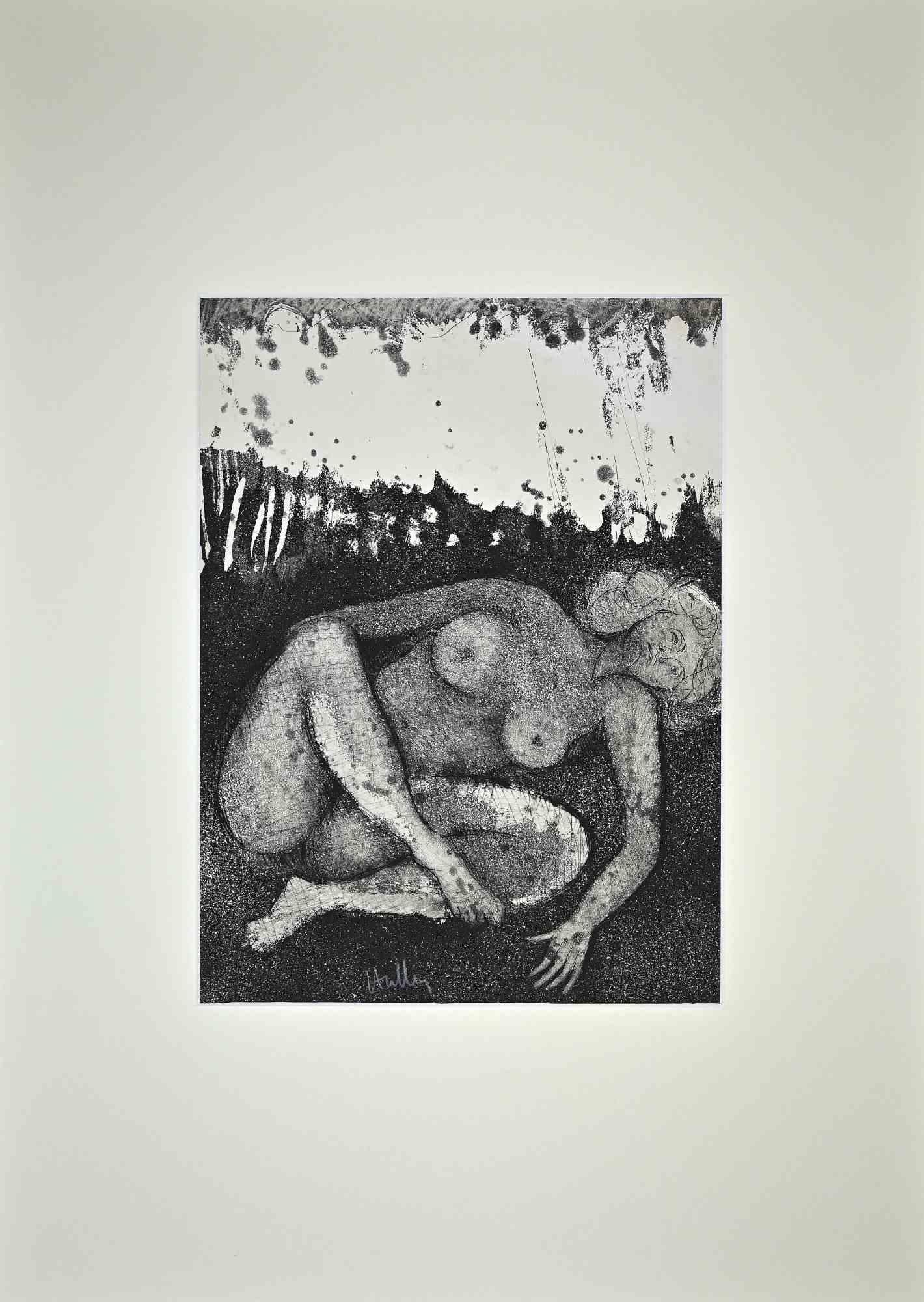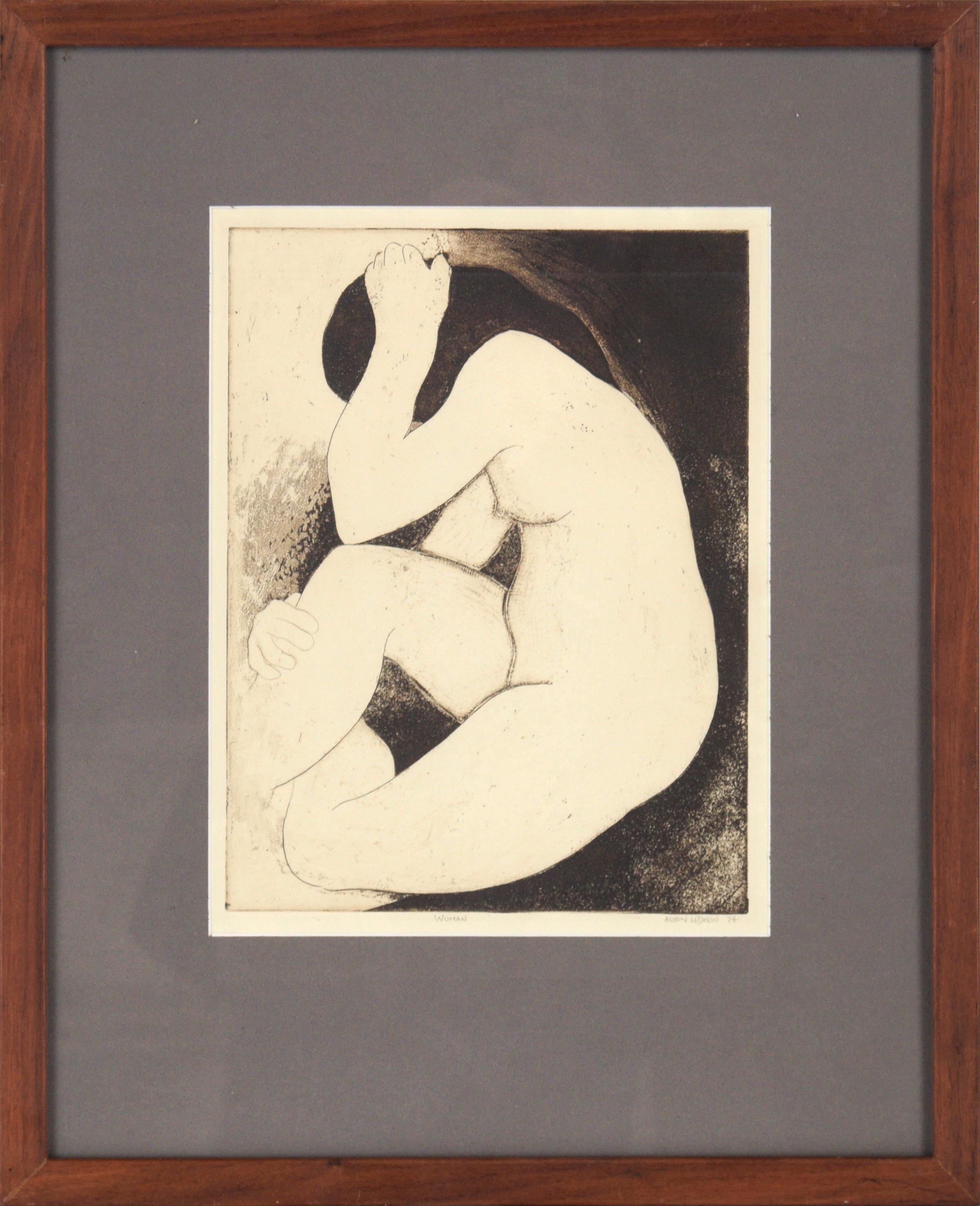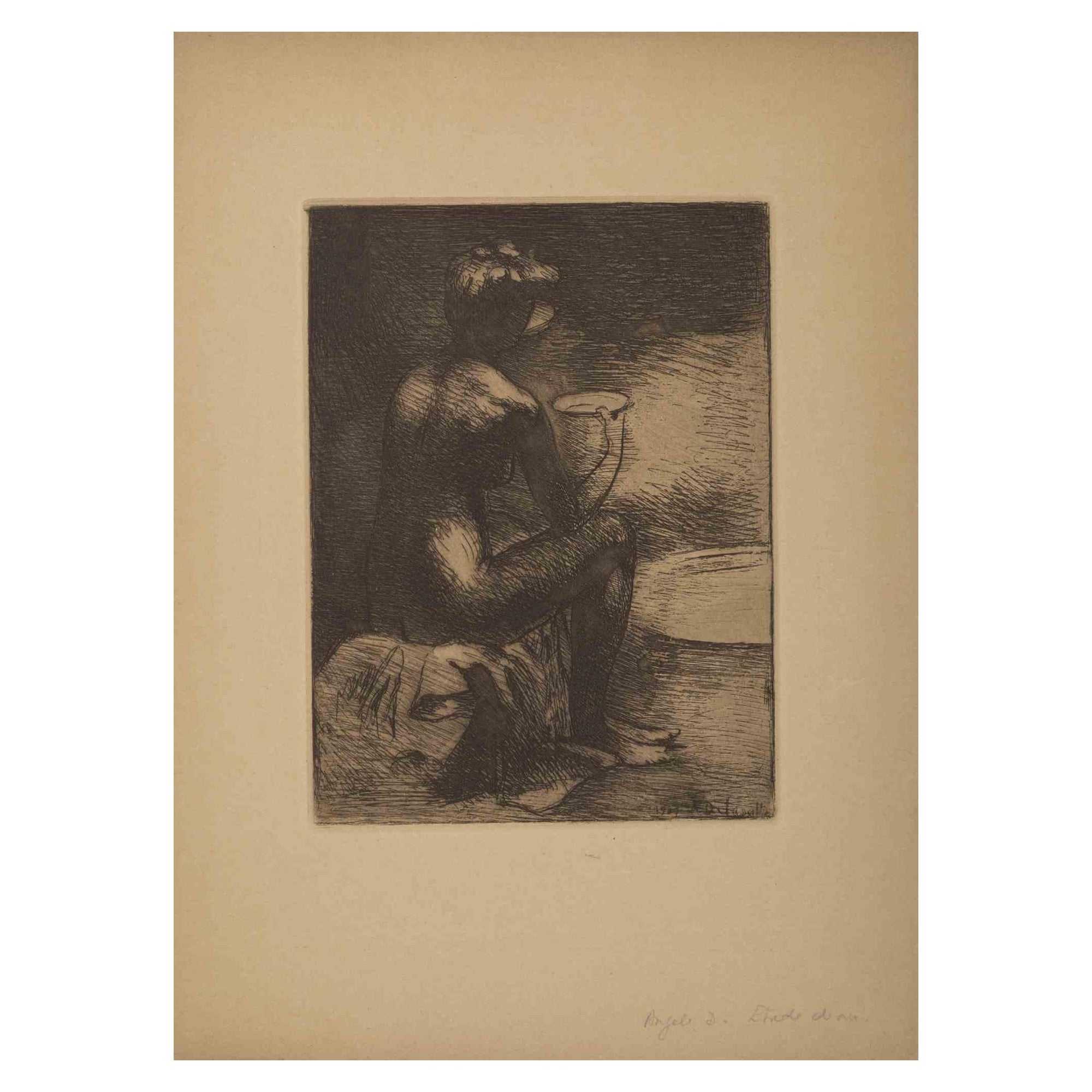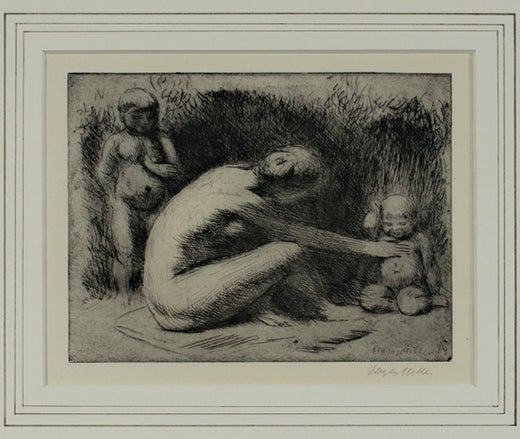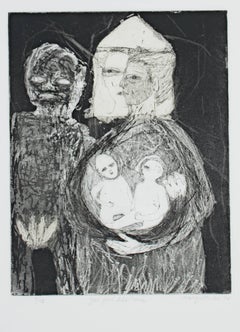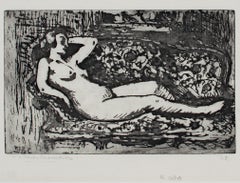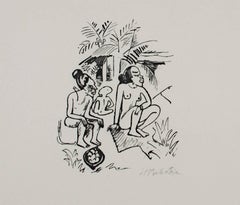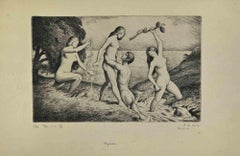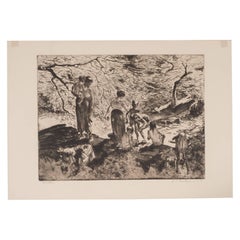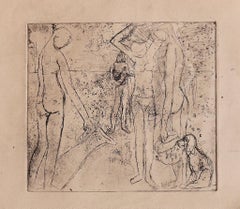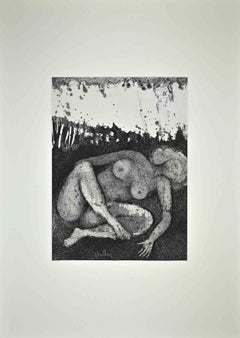Items Similar to "Play, " Figurative Etching Nude with Children signed by Kenneth Hayes Miller
Want more images or videos?
Request additional images or videos from the seller
1 of 8
Kenneth Hayes Miller"Play, " Figurative Etching Nude with Children signed by Kenneth Hayes Millerc. 1921
c. 1921
$1,700
£1,323.56
€1,505.27
CA$2,445.40
A$2,686.71
CHF 1,404.09
MX$32,041.20
NOK 17,779.57
SEK 16,563.17
DKK 11,248.11
About the Item
"Play" is an original etching by Kenneth Hayes Miller. The artist signed the piece in pencil and in the plate. This piece features a nude figure with two smaller doll-like figures.
4 5/8" x 6" art
17 3/8" x 19 3/4" frame
Kenneth Hayes Miller (March 11, 1876 – January 1, 1952) was an American painter, printmaker, and teacher.
Born in Oneida, New York, he studied at the Art Students League of New York with Kenyon Cox, Henry Siddons Mowbray and with William Merritt Chase at the New York School of Art. His early works were influenced by the paintings of his friend Albert Pinkham Ryder, and depict figures in phantasmagorical landscapes.
After 1920 Miller became interested in the underpainting-and-glazing techniques of the old masters, which he employed in painting contemporary scenes. He is especially noted for his many paintings of women shopping in department stores. The art historian M. Sue Kendall says: "In their classical poses and formalized compositions, Miller’s shoppers become ovoid and columnar forms in cloche hats and chokers, a study of geometricized volumes in space trying to inhabit a single shallow picture plane." Active as a printmaker throughout his career, Miller created many etchings, some of which reproduce his painted compositions.
Although he used traditional methods and was hostile to artistic modernism, Miller believed that good art is always radical in nature. He was a socialist, and intended his art to have a political dimension.
By the time of his death in New York City in 1952, his reputation was in eclipse, but he was rediscovered in the 1970s.
- Creator:Kenneth Hayes Miller (1876-1952, American)
- Creation Year:c. 1921
- Dimensions:Height: 19.375 in (49.22 cm)Width: 19.75 in (50.17 cm)
- Medium:
- Movement & Style:
- Period:
- Condition:
- Gallery Location:Milwaukee, WI
- Reference Number:Seller: 9748g1stDibs: LU60533777241
Kenneth Hayes Miller
Kenneth Hayes Miller is best known as a teacher and founder of what became known as the Fourteenth Street school. While paintings of middle-class female shoppers from his mature period are his best known, he had a long, distinctly different early phase. Miller was born in the utopian community of Oneida and studied art in the 1890s at the New York School of Art with William Merritt Chase and later at the Art Students League with several prominent, traditional, mural painters, such as Kenyon Cox and H. Siddons Mowbray. Works from his first sustained period of painting are mostly of nude figures set in idealized, romantic landscapes. These poetic, somewhat symbolic paintings, similar to the art of his contemporaries Arthur B. Davies and Bryson Burroughs, were largely inspired by Albert Pinkham Ryder, an artist Miller admired and befriended. After World War I Miller turned to realism. Like the Ash Can school painters, he became a delineator of the ordinary pedestrian, but unlike them was fascinated with the human figure as a vehicle for plastic interpretation. His painting style became less atmospheric as he brightened his palette and delineated objects more clearly. His depictions of robust female shoppers in groups, pairs, or alone established his reputation in the 1920s and 1930s. He also continued to paint the female nude but placed the figure in interior settings and rendered it as a more sensuous and real body than he had in his earlier idealized works. Throughout his career Miller was also interested in etching and sometimes repeated his painted images in prints. After a trip to Europe in 1900 Miller began a long teaching career, first at the Chase School of Art, and when that dissolved, in 1911 he began his more than forty-year association with the Art Students League. His numerous students there included Peggy Bacon, George Bellows, Isabel Bishop, Arnold Blanch, Patrick Henry Bruce, Minna Citron, John McCrady, Thelma Cudlipp, Horace Day, Dorothy Eaton, Arnold Friedman, Lloyd Goodrich, Josephine Hopper, Rockwell Kent, Yasuo Kuniyoshi, Emma Fordyce MacRae, Edward Middleton Manigault, Reginald Marsh, George L.K. Morris, Walter Tandy Murch, Louise Emerson Ronnebeck, George Tooker, Russel Wright, Albert Pels, William C. Palmer, Molly Luce, and Helen Winslow Durkee. In his teaching Miller stressed the importance of learning from the art of the past, in particular that of the Renaissance. He was also instrumental in reviving old-master techniques such as casein and tempera painting.
About the Seller
4.9
Gold Seller
Premium sellers maintaining a 4.3+ rating and 24-hour response times
Established in 1966
1stDibs seller since 2017
452 sales on 1stDibs
Typical response time: 1 hour
- ShippingRetrieving quote...Shipping from: Milwaukee, WI
- Return Policy
More From This Seller
View AllOriginal Lithograph Baby Life Moments Family Female Figure Mother Black Signed
By Jean Charlot
Located in Milwaukee, WI
"First Steps" is an original lithograph created by Jean Charlot. This is a wonderful piece with hispanic styling, showing a mother teaching her child how to walk. The mother is shown standing behind the child holding it in a fabric sling. The child is shown in the foreground leaning into the fabric sling as it starts to take its first steps. The artist signed this work in the lower right.
Image Size: 13 7/8" x 9 3/4"
Paper Size: 17 1/2" x 12 5/8"
Frame Size: 23" x 19"
Artist Bio:
Louis Henri Jean Charlot was a French-born American painter and illustrator, active mainly in Mexico and the United States. Charlot’s mother’s family originated from Mexico City, and the artist was fascinated with Mexican manuscripts and pre-Columbian artifacts...
Category
1930s Other Art Style Figurative Prints
Materials
Paper, Ink, Lithograph
"You Feel Like Home, " an Etching & Aquatint signed by Molly McKee
By Molly McKee
Located in Milwaukee, WI
"You Feel Like Home" is an original etching and aquatint signed by the artist Molly McKee. It is edition 3/10 and depicts a figure holding two babies and another tall figure to the l...
Category
1990s Expressionist Figurative Prints
Materials
Etching, Aquatint
"Le Repos (Rest), " Original Etching Nude signed by Victor Roux-Champion
By Victor Roux-Champion
Located in Milwaukee, WI
"Le Repos (Rest)" is an original etching by Victor Roux-Champion. It features a nude woman lounging on a couch. The artist signed the piece lower left and wrote the edition number, 2...
Category
Early 1900s Modern Figurative Prints
Materials
Etching
Nude Female Figure Baby Family 1910's Black and White Original Lithograph Signed
By Max Pechstein
Located in Milwaukee, WI
"Three Seated Figures- Women (Frauen)" is an original lithograph from the "South Sea (Sudsee)" series by Max Pechstein. This lithograph depicts th...
Category
Early 20th Century Expressionist Figurative Prints
Materials
Lithograph
"Hinting (With Chine Colle), " Etching & Aquatint signed by Molly McKee
By Molly McKee
Located in Milwaukee, WI
"Hinting" is an original etching and aquatint made with Chine Colle by Molly McKee. The artist signed the piece in the lower right, titled it lower center, and wrote the edition numb...
Category
1990s Surrealist Figurative Prints
Materials
Etching, Aquatint
20th century color lithograph figurative print artist easel canvas scene signed
By Claude Weisbuch
Located in Milwaukee, WI
"Artiste Dans l'Atelier" is an original lithograph by Claude Weisbuch. The artist signed the piece lower right and wrote the edition number (126/320) in the lower left. This piece de...
Category
1970s Modern Figurative Prints
Materials
Lithograph
You May Also Like
Nudes - Etching by Paul Emile Colin - Mid-20th Century
Located in Roma, IT
Nudes is an etching realized by Paul Emile Colin in the Mid-20th Century.
hand-signed.
Numbered.Edition, 1/30.
Good conditions with slight foxing.
The artwork is realized through...
Category
Mid-20th Century Modern Figurative Prints
Materials
Etching
"Bathers" by John E. Costigan, Original Limited Edition Signed Etching
By John Edward Costigan
Located in New York, NY
This original, limited edition etching, was realized by the esteemed American artist John E. Costigan, circa 1930. He is represented in the collections of the Metropolitan Museum, th...
Category
Vintage 1930s American Art Deco Prints
Materials
Paper
Figures - Etching - Mid-20th Century
Located in Roma, IT
Figures is an etching on paper by an Anonymous Artist of The 20th Century.
In good conditions.
Not signed.
This artwork represents several figures in different poses. The artwork ...
Category
Mid-20th Century Modern Figurative Prints
Materials
Etching
Nude - Original Etching - Mid-20th Century
Located in Roma, IT
Nude is an original artwork realized by an artist of the mid-20th century.
Etching and Aquatint.
The drawing is inside a white cardboard passepartout (69x49 cm).
Category
Mid-20th Century Modern Figurative Prints
Materials
Etching
"Woman" Nude Figurative Etching
Located in Soquel, CA
Elegant nude by Suzanne Aubin Ledrew (American, b. 1942). The woman in this piece is seated, with her hand covering her face and head, turned partially away from the viewer. There is a lovely contract between the background and the figure, creating a negative shape out of the woman's body.
Titled "WOMAN" in the lower center.
Signed and dated "AUBIN LEDREW 74" in the lower right corner.
Presented in a new grey mat with a wood frame.
Image size: 12"H x 9"W
Suzanne Addicott (nee Aubin Ledrew) (American, b. 1942) graduated from California College of the Arts with a BFA in Painting and Drawing. She is an artist and teacher at Studio9...
Category
1970s Modern Nude Prints
Materials
Paper, Ink
Study for a Nude - Original Etching by A. Delasalle - Mid-20th Century
By Angèle Delasalle
Located in Roma, IT
Study for a Nude is a contemporary artwork realized by the French artist Angèle Delasalle in the Mid-20th Century.
Original etching and drypoint.
Si...
Category
Mid-20th Century Post-Impressionist Figurative Prints
Materials
Etching
